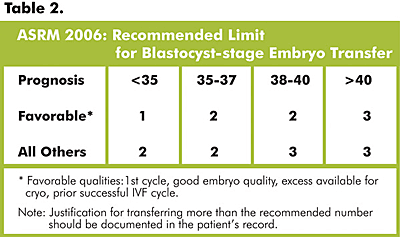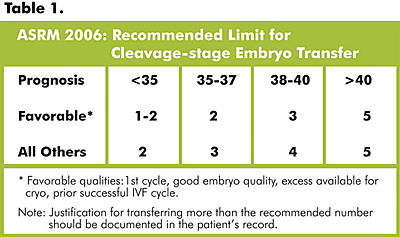ASRM Round Up 2007

|  | PFC's embryologists attending ASRM's research poster session Jean Popwell, PhD (left) and Jennifer Andres (right). |
Single-Embryo Transfer: Minimizing Risks & Maximizing Outcomesembryo transfer techniques. Oocyte Freezing, PGS & Blastocyst Embryo Transfers On the laboratory side, there were several talks on evaluation of eggs and embryo selection techniques, embryo freezing technology, including a debate about the usefulness of pre-implantation genetic screening (chromosome analysis of embryos) embryo selection. The combination was a fascinating mixture of new ideas, refinements in current technology, as well as a welcome opportunity to network and discuss with others the latest developments in reproductive science. Topping the list of presentations in New Orleans were those concerning the continuing refinements in oocyte freezing technologies, the more selective use of preimplantation genetic testing and the ongoing scrutiny of blastocyst stage embryo transfers. Slow-freeze vs. Vitrification The traditional slow-freeze technology used so successfully with embryos for many years, has essentially stalled with oocyte freezing. It appears the slow-freeze technology has finally met its successor: a process called vitrification. Slow freezing has had very limited success with oocytes due to their large size, high water content and their extreme sensitivity to cryoprotective chemicals and to changes in temperature and pH. Vitrification, a technology that cools cells so rapidly that ice does not form, has been such a success for oocyte freezing that many labs are now abandoning slow freezing altogether. Here at PFC, we have been developing protocols for oocyte vitrification throughout 2006 and are actively working on blastocyst vitrification. It was reaffirming to see that this technology has gained wide acceptance, and is showing excellent results. Preimplantation Genetic Screening (PGS) While vitrification is on the rise, it was interesting to see that another technology, Preimplantation Genetic Screening (PGS), was lacking in new improvements or viable alternatives. Embryos have been screened for extra or missing chromosomes for over 15 years now, but the technology has not advanced significantly over that time. It is still possible to count only 12 chromosomes in an embryo. Although the error rate per chromosome is very low, the accumulated error rate becomes significant as we count more chromosomes. PGS was under the microscope in several presentations in New Orleans and it appears PFC's limited use of genetic screening is well justified. Specifically, PGS does not improve embryo selection and pregnancy rates in younger patients. Its use is limited in older patients because there are often too few embryos available to justify testing. The patients who benefit most from PGS are the younger patients who experience recurrent miscarriages. However, unless there is evidence that previous pregnancies were genetically abnormal, PGS may provide limited benefit to this group. Blastocyst stage embryo transfers While younger patients (those under 35) don't benefit from PGS, they are the patient population most likely to benefit from blastocyst transfers. Culturing embryos for 5 days to the blastocyst stage, instead of the more traditional day 3 embryo transfer, is one of the main ways in which the laboratory staff can help in selecting the best embryo for single embryo transfer (SET) patients. Blastocyst culture techniques are well refined now and support the commitment within the community to transfer fewer embryos at one time. Furthermore, the promise of vitrification can reassure patients that their remaining embryos can be stored indefinitely when preserved at the blastocyst stage. Several presentations showed that blastocysts which were vitrified early, before their cavity (or cyst) had expanded too much, benefited most from the technology. In more advanced blastocysts, artificial reduction of the cavity gave superior results. It may not be long before vitrification is the procedure of choice for preserving all blastocysts. 2006 ASRM guidelines for numbers of embryos to transfer The new 2006 ASRM guidelines for numbers of embryos to transfer were presented. See Tables 1 and 2 below. 
Categories
About the Blog
Welcome to the Pacific Fertility Center Blog! Nationally and internationally recognized for providing exceptional reproductive care, our team believes in empowering people with the knowledge they need to navigate their unique fertility journeys.
From information on the latest fertility treatments to valuable insights on egg donation, surrogacy, and everything in between, the Pacific Fertility Center Blog is your ultimate resource for all things reproductive care and support. Read on to learn more, and contact us today if you have any questions or want to schedule a new patient appointment.


